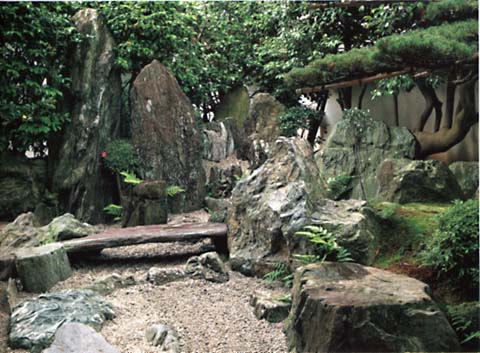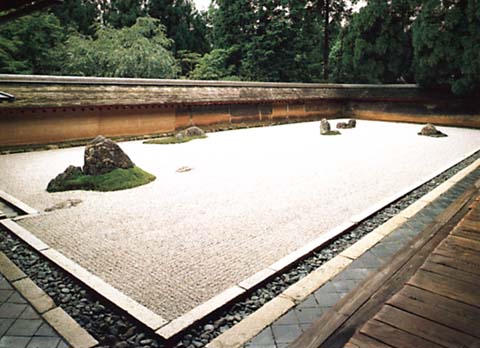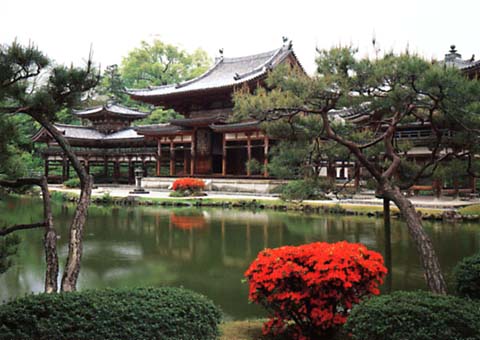
One of the characterisitic styles of medieval Japanese gardens is kare sansui: literally "dry mountain and water." The style relies on rocks, gravel, and other dry elements to create the illusion of a mountain landscape. One of the best-known examples of kare sanasui is the small garden at Daisen-in in Kyoto. This Muromachi-era garden is just over 1000 sq. ft, but it creates the illusion of a river wending its way through huge boulders, passing under a bridge, and then entering the ocean.


This example of kare sansui is the famous Zen meditation garden at Ryöanji. Like the Daisenin, it used rocks and gravel to evoke mountains and water. The garden uses 15 stones, but not all can be viewed from any given angle. What is the point of that design?
Note the contrast between the Daisenin viewing garden and the strolling garden at the Heian-era Byödöin below. The Byödöin is the best survivng example of Heian-era residential architecture. The garden was designed to evoke the Western Paradise of Amida Buddhism and it uses a broad range of elements, include water and flowers to evoke heavenly beauty. The aestethic is refined, but it is less metaphorical than at the Daisenin.
